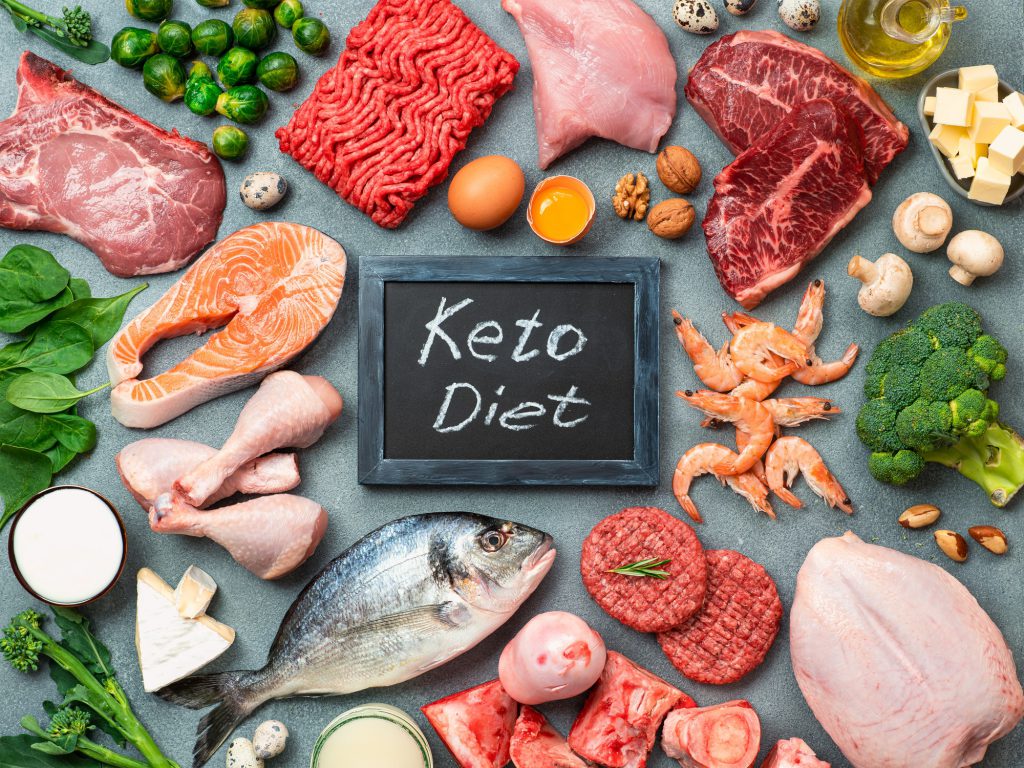Counting macros can be a game-changer for weight loss. Unlike traditional calorie counting, which only considers the number of calories consumed, macro counting involves tracking the amount of protein, carbohydrates, and fats in your diet. By monitoring your macros, you can ensure that your body is receiving the optimal balance of nutrients to support your weight loss journey. This approach is more effective than simply reducing calories, as it helps you maintain muscle mass and energy levels while shedding unwanted pounds.
If you’re looking to manage your diet and lose weight, counting macros can be a great tool. While it may seem overwhelming at first, with the right approach and tools, it can be simple and effective. In this blog, we’ll guide you through the basics of counting macros, including how to determine your macro needs, track your macros, set calorie and macro goals, plan meals, and choose micronutrient-dense foods. We’ll also offer tips for incorporating flexibility and moderation into your macro-tracking diet, as well as solutions for common challenges you may encounter. With our help, you’ll be on your way to achieving your weight loss goals in no time!
Knowing what your macronutrient ratios are is the best way to maintain or create the perfect physique or balance you are looking for. This is because macros are all based on your individual needs.
Brief Explanation of Macros
Macronutrients, or macros for short, are the three primary nutrients that provide the calories in food: protein, carbohydrates, and fats. These nutrients are essential for the body and each plays a unique role in providing energy and supporting bodily functions. By understanding the importance of macros and balancing them in your diet, you can optimize your health and well-being. Protein is crucial for repairing and building tissues, especially muscle mass. Carbohydrates are the body’s main source of energy, providing fuel for physical activity and brain function. Fats also provide energy but also aid in hormone production and the absorption of certain vitamins. A balanced diet that includes all three macronutrients is essential for overall health and well-being.
What Are The Benefits Of A Macro Diet?
A macro diet, which involves tracking and balancing the intake of macronutrients (protein, carbohydrates, and fat), has several potential benefits, including:
- Weight Loss: By ensuring that you’re ingesting the right number of calories and macronutrients for your body’s requirements, a macro diet can help you lose weight. You can generate a calorie deficit and make sure your body is burning fat for fuel by keeping track of your intake and balancing your macronutrients.
- Better Body Composition: Eating enough protein can promote fat-burning while supporting muscle growth and maintenance, resulting in a more toned and defined physique.
- Improved Energy: Maintaining a healthy balance between your consumption of carbs and fats will provide your body with the continuous energy it needs to go through the day without feeling tired or experiencing blood sugar dips.
- Better Eating Habits: By keeping track of your consumption and learning about the macronutrient makeup of various meals, you can make more educated decisions and create a more sustainable and balanced diet plan.
- Improved Nutritional Balance: By balancing your macronutrient consumption, you can make sure that you’re also getting all the micronutrients your body needs to perform at its best, including vitamins and minerals.
Importance Of Counting Macros For Weight Loss
Counting your diet’s protein, carbohydrate, and fat intake is part of the popular weight loss strategy known as counting macros. This approach to eating, which places an emphasis on food balance and satiety, can be quite helpful for weight reduction. You may design a diet that is tailored to your body’s requirements by figuring up your precise macro needs based on variables like age, gender, weight, and activity level. Instead of prioritising low-calorie items over nutrient-dense alternatives as is the case with regular calorie tracking, counting macros concentrates on obtaining the ideal ratio of macronutrients to assist weight reduction and general wellness.
Your body will receive the resources it needs to function at its best if you prioritise protein, carbs, and fats in the appropriate proportions. This will also increase feelings of fullness and decrease cravings. Furthermore, keeping track of your macros forces you to be attentive to what you eat and make deliberate meal choices, which can help to improve your awareness and mindfulness of your eating patterns.
Counting calories alone doesn’t tell you anything about how balanced your diet should be: for 1,500 calories a day, you could eat four iced ring doughnuts, cake or 375 strawberries, neither of which would be healthy.
Overall, macro counting is an effective weight reduction method that may assist you in reaching your objectives in a customised, balanced, and long-term manner.
Your Step-By-Step Guide To Calculating Your Own Macros
If you want to lose weight, you need to be sure that you’re eating the right number of macros. This means that you need to count the number of grams of each food item. There are a few ways How to Count Macros for Weight Loss, and one of the simplest is to use a macro calculator.
Ok, so this post would be pointless if we didn’t show you exactly the Best Macros for Weight Loss too. You don’t have to specifically How to Track Macros for Weight Loss for every meal but knowing they are there and present in different food groups means you are much better equipped to make informed choices with the food groups you choose for a balanced meal. Do you want to take control of your own nutrition? Here’s how to do it…
Step 1: What’s your goal? Before you begin to make your plan you need to determine what your goal is, even if it’s just maintenance. This is crucial to making the next step.
Step 2: Determine your ‘daily calorie needs’. Here you will fill in the details about yourself such as your height, weight, age and how many times you can exercise a week. You will then be given 3 numbers which are:
- How many calories do you need daily for weight loss
- Maintenance
- Extreme weight loss
Step 3: Take the number, use the ‘nutrient calculator’, enter your calories and choose ‘moderate’. This is usually a good, average program to follow. Fill in the rest of the details and press calculate. Your macronutrients will then be delivered. You can see how many grams per food group you need in your meals. The results will look something like this:
| CARB | PROTEIN | FAT | |
| GRAMS per day | 168g | 112g | 41g |
| GRAMS per meal | 33.6g | 22.4g | 8.2g |
| CALORIES per day | 675 cals | 450 cals | 375 cals |
| CALORIES per meal | 135 cals | 90 cals | 75 cals |
Counting Your Macros for Weight Loss will enable you to make a scientific and customised nutrition plan completely tailored to your body and your goals. You can select your own lean protein sources, healthy carbs and fats based on your own preferences. You are creating your own menu. Below we have included some healthy meal recipes with good, balanced macronutrient ratios.
Importance Of Balancing Macronutrient-Dense Foods With Other Nutrient-Rich Foods
While counting your macros is a good approach to make sure you’re getting the proper amount of protein, carbs, and fats for weight reduction, it’s also crucial to balance meals that are high in macronutrients with other nutrient-rich foods. Occasionally, concentrating only on macros might leave your body deficient in vital vitamins, minerals, fibre, and other necessary nutrients. You may attain your weight reduction objectives by eating nutrient-rich foods like fruits, vegetables, whole grains, nuts, and seeds since they provide a number of health advantages. Vitamins and minerals are examples of micronutrients that strengthen the immune system, encourage good skin and hair, and enhance general health. A kind of carbohydrate called fibre, which is included in plant-based meals, lowers the risk of heart disease and aids in controlling blood sugar levels and digestion. Including a variety of nutrient-dense foods in your diet can also help you feel full faster and make eating more pleasurable and rewarding. In conclusion, while meals high in macronutrients are beneficial for weight reduction, it’s necessary to balance them with foods high in nutrients to make sure you’re fulfilling all of your body’s nutritional requirements.
Easy High-Protein Meal Recipes
Below are some delicious high-protein meals, which include a lean source and are low in fat making them well-balanced in their macronutrient ratios.
Oats and Whey
What do you need?
- Rolled oats
- 1 – 2 scoops of protein
- 1 teaspoon of your favourite nut butter
This is one of the easiest high-protein meals ever and requires minimum effort, but delivers maximum taste and fulfilment! Pour your desired amount of oats into the bowl and add water. Allow water to be fully absorbed by the oats, then add your scoop of protein. Mix well until the protein has been fully dissolved. Top with your favourite nut butter and enjoy!
Grilled salmon, asparagus & rice
What do you need?
- 1 salmon fillet
- Handful of asparagus
- Half a pack of microwavable basmati rice
Another easy one, this high protein meal contains healthy omega 3 & 6 fats in the salmon, and asparagus is a natural diuretic that helps with weight loss. The basmati rice is a low GI carb, which means it digests slowly keeping you fuller for longer. Grill the salmon for around 6 minutes and roast the asparagus in the oven for around 15 minutes. Serve up with basmati rice and enjoy!
Vegetarian tofu sandwich
What do you need?
- Half a block of firm tofu
- Whole grain bread bun
- Sesame seed oil
- Tomatoes, spinach and any salad of your choice
Slice up the tofu and brush with sesame seed oil. Lay on the baking tray and roast in the oven for 45 minutes, turning frequently. Once cooked, lay over the bread and finish with adding the salad and some light mayo. This tasty sandwich is low in fat and high in protein.
Bedtime recovery protein shake
What do you need?
- Casein protein powder
- Coconut milk
- Oats
- Flaxseed
- 1 scoop of super greens powder
This bedtime recovery shake is the perfect bedtime fuel! Using a blender, add in a scoop of protein and 2 cups of coconut milk, 30g of oats and a teaspoon of flaxseed. Blend the ingredients, then add in the scoop of greens powder and blend again. This drink is the perfect nighttime fuel! It will keep your body full throughout the night and provide a tapered release of protein to your muscles while you sleep and recover. Strive Weight Loss Challenge makes it easy to track your food and exercise logs so that you can see exactly how much weight you’ve lost and where you need to improve.
What Does An Example Of A Macro Plan Look Like?
Here is an example of a macro plan based on a 2,000-calorie diet with a 40/30/30 split of carbohydrates, protein, and fat, respectively:
Carbohydrates: 40% of total calories = 800 calories
- 200g of carbohydrates per day
Protein: 30% of total calories = 600 calories
- 150g of protein per day
Fat: 30% of total calories = 600 calories
- 67g of fat per day
This is just an example and macronutrient needs can vary depending on individual factors such as age, gender, weight, and activity level. It’s important to work with a registered dietitian or qualified nutrition professional to determine your individual macronutrient needs and create a customized plan. Additionally, it’s important to note that while macro tracking can be a helpful tool for some individuals, it’s not necessary or appropriate for everyone and may not be suitable for those with disordered eating behaviors or a history of eating disorders.
Potential Drawbacks Of Macro-Tracking Diets
While macro-tracking diets can be helpful for some individuals, there are also potential drawbacks to consider. Here are some examples:
- Obsessive behavior: Constantly tracking macros and becoming overly concerned with hitting specific numbers can lead to an unhealthy preoccupation with food and body image.
- Nutrient deficiencies: Focusing solely on macronutrient intake can cause individuals to overlook important micronutrients, such as vitamins and minerals, that are necessary for overall health.
- Lack of variety: Constantly tracking macros may cause individuals to stick to the same foods and meals, leading to a lack of variety in their diet.
- Inaccuracy: Measuring and tracking food intake can be difficult and inaccurate, which may lead to an incorrect estimation of macro intake.
- Unnecessary stress: Macro-tracking can be time-consuming and stressful, especially if it interferes with daily activities or social events.
Conclusion
By monitoring and balancing the consumption of carbs, protein, and fat, counting macros might be a useful strategy for weight reduction. You may establish a calorie deficit and encourage weight reduction by figuring out your particular macro requirements and keeping track of your food consumption. However, it’s crucial to use caution while calculating your macros and put an emphasis on eating a well-rounded, diverse diet that’s rich in nutrient-dense foods. In order to identify your unique macronutrient requirements and develop a personalised plan that works for you, it’s also essential to speak with a registered dietitian or other trained nutrition specialist. You may reach your weight reduction objectives while preserving general health and well-being by adhering to a sustainable and personalised macro diet.
What are macronutrients?
Macronutrients are huge molecules that we require to merely survive, commonly known as the primary nutrients. To maintain bodily functions and carry out daily activities, a considerable amount of macronutrients is required. These nutrients also supply calories or energy to our bodies. Carbohydrates, proteins, and fats are the three main macronutrients. You need all three, If you eliminate any one macronutrient, you risk vitamin deficiency and illness.
What is a macronutrients counting?
Counting macronutrients is an eating strategy that involves keeping track of your calories, broken down into macronutrients (protein, carbs, and fats), to ensure that you're eating more or less than your TDEE (total daily energy expenditure), depending on your goals. It's time-consuming at first since you'll have to weigh all of your meats, vegetables, and carbs, read labels, and cut back on nights out and alcohol—but the end result is a healthier and more intuitive awareness of how to eat in a way that suits you.
How Many Calories Do Macronutrients Have?
Protein, carbs, and fats are the three kinds of nutrients that you consume the most and that give you the majority of your energy. Each macronutrient includes a calorie value per gram that is as follows:
- Carbohydrates include a calorie count of 4 per gram.
- Proteins have a calorie content of 4 per gram.
- Each gram of fat contains 9 calories.
How Can You Count Macros For Weight Loss?
This is dependent on your age, size, and amount of activity. Others who exercise require a different amount of carbohydrates and protein than those who are more sedentary. However, these ratios are a decent place to start in general:
- If you only workout for an hour a day or less: Protein (30%), fat (30%), and carbohydrates (40%)
- If you exercise for one to two hours each day, you will achieve the following results: 30 percent protein, 25% fat, and 45 percent carbohydrates
- Consider consulting a professional sports dietitian if you work out for more than two hours each day. You need personalisation to sustain that high physical output and lose weight healthily.
How Does Counting Macronutrients Work For A Healthy Body?
Counting your macros is a great method to keep track of what you're eating while also allowing yourself to enjoy items that you wouldn't normally eat. You'd start by calculating your daily macro allowance and then using a calorie-tracking app like Strive Fitness to keep track of everything you eat. You'll weigh and chart your food, as well as your body weight and measurements, once you have those numbers. Reduce your macros if you're not losing weight, and raise them if you're losing too much (more than three pounds per week).
What Are The Food Sources For Macronutrients?
Although most foods contain a variety of micronutrients, some sources are more beneficial for certain macronutrients than others.
Carbohydrates- These are frequently found in whole grains like barley, rice, pasta, and wheat. Additionally, they can be found in dairy products, entire fruits, honey, legumes, and carbohydrates like potatoes and corn. While sugars are also carbs, they should only be consumed in moderation.
Proteins- Meats, fish, nuts, seeds, complete grains, beans, eggs, dairy, soy, and tofu are frequent sources of protein.
Fats- Avocados, fatty salmon, seeds, olive oil, and almonds are all sources of healthier unsaturated fats. Meat and processed or greasy meals like butter and cheese are examples of foods that contain saturated fats. Saturated fats are less healthful than unsaturated fats, according to experts, and should be consumed in moderation.
What's The Difference Between Macronutrients And Micronutrients?
Micronutrients, such as vitamins and minerals, are separate from macronutrients. Macronutrients are required in greater quantities than micronutrients. However, this does not diminish the importance of micronutrients. Micronutrients serve different functions in your body than macronutrients. There are 13 necessary vitamins and 13 minerals, each of which has specific, sometimes overlapping roles.
Micronutrients help in growth, brain development, immune function, and energy metabolism. While macronutrients supply energy and are the building blocks of your body’s structure and functions, micronutrients don’t contain calories. Instead, they’re essential for extracting energy from food and facilitating bodily processes. Micronutrients include carbohydrates, protein and fats, whereas micronutrients include vitamins, minerals, and iron.
What Are The Types Of Macronutrient Diets?
There are several types of macronutrient diets, each of which focuses on a different ratio of carbohydrates, protein, and fat. Here are some of the most popular types of macronutrient diets:
Low-Carb, High-Fat (LCHF) Diet: This diet focuses on a high fat intake and severely limits carbohydrates. The goal is to get the body into a state of ketosis, where it burns fat for energy instead of carbohydrates.
High-Carb, Low-Fat (HCLF) Diet: This diet focuses on a high carbohydrate intake and limits fat intake. It is typically used by athletes who need a lot of energy for training.
High-Protein Diet: This diet focuses on a high protein intake, typically around 1 gram of protein per pound of body weight. It is often used by athletes looking to build muscle mass.
Balanced Macronutrient Diet: This diet focuses on a balanced intake of all three macronutrients - carbohydrates, protein, and fat. The ratio can vary but typically falls within the range of 40-60% carbohydrates, 20-30% protein, and 20-30% fat.



